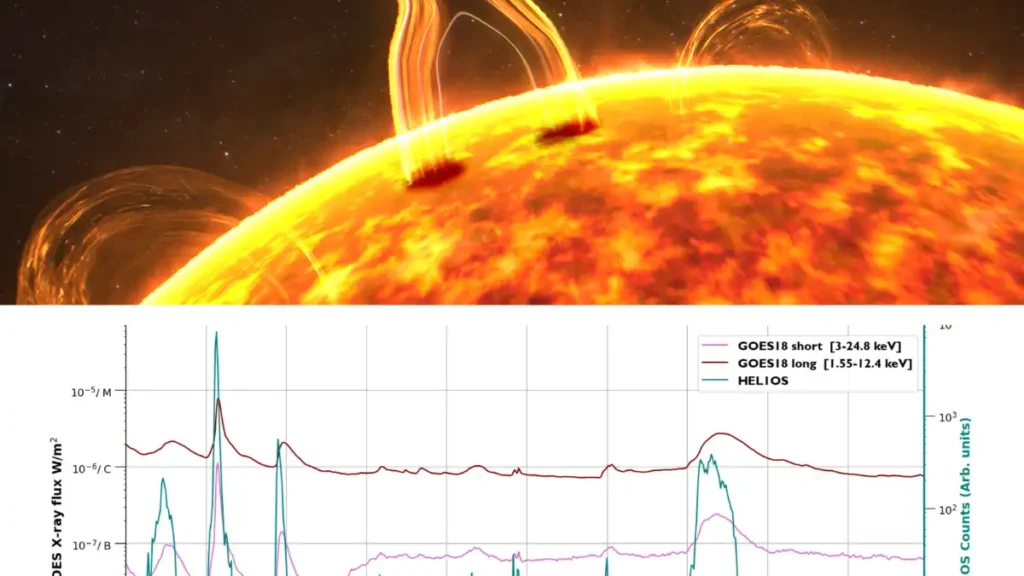Aditya-L1 Mission: In a groundbreaking achievement, the High Energy L1 Orbiting X-ray Spectrometer (HEL1OS) aboard the Aditya-L1 spacecraft has successfully captured the impulsive phase of solar flares during its first observation period, which took place from approximately 12:00 to 22:00 UT on October 29, 2023. This significant milestone in solar observation promises to shed light on the Sun’s dynamic behavior and its potential impact on our planet.

Commissioned just two days earlier, on October 27, 2023, HEL1OS is currently in the process of fine-tuning its thresholds and undergoing crucial calibration operations. Once fully operational, this sophisticated instrument is poised to play a pivotal role in monitoring the Sun’s high-energy X-ray activity with fast timing and high-resolution spectral analysis.
ALSO READ: Why You Must Check Your Geyser Twice Before Taking A Bath
The data obtained from HEL1OS’s initial observations has already shown a remarkable level of consistency with X-ray light curves provided by the National Oceanic and Atmospheric Administration’s (NOAA) Geostationary Operational Environmental Satellites (GOES). This alignment with existing solar monitoring systems reinforces the reliability and accuracy of HEL1OS’s capabilities.
Aditya-L1 Mission:
— ISRO (@isro) November 7, 2023
HEL1OS captures first High-Energy X-ray glimpse of Solar Flares
🔸During its first observation period from approximately 12:00 to 22:00 UT on October 29, 2023, the High Energy L1 Orbiting X-ray Spectrometer (HEL1OS) on board Aditya-L1 has recorded the… pic.twitter.com/X6R9zhdwM5
One of the most exciting aspects of HEL1OS is its potential to provide researchers with a deeper understanding of the explosive energy release and electron acceleration that occur during the impulsive phases of solar flares. Solar flares are sudden and intense bursts of energy from the Sun, and gaining insights into their characteristics is of great scientific importance, as these events can impact space weather, communication systems, and even power grids on Earth.
As HEL1OS continues its operations and data collection, scientists and astronomers around the world eagerly anticipate the wealth of knowledge it will bring about our Sun’s high-energy phenomena. This mission marks a significant step in our quest to unravel the mysteries of our closest star and enhance our preparedness for potential space weather events that could affect life on Earth.








